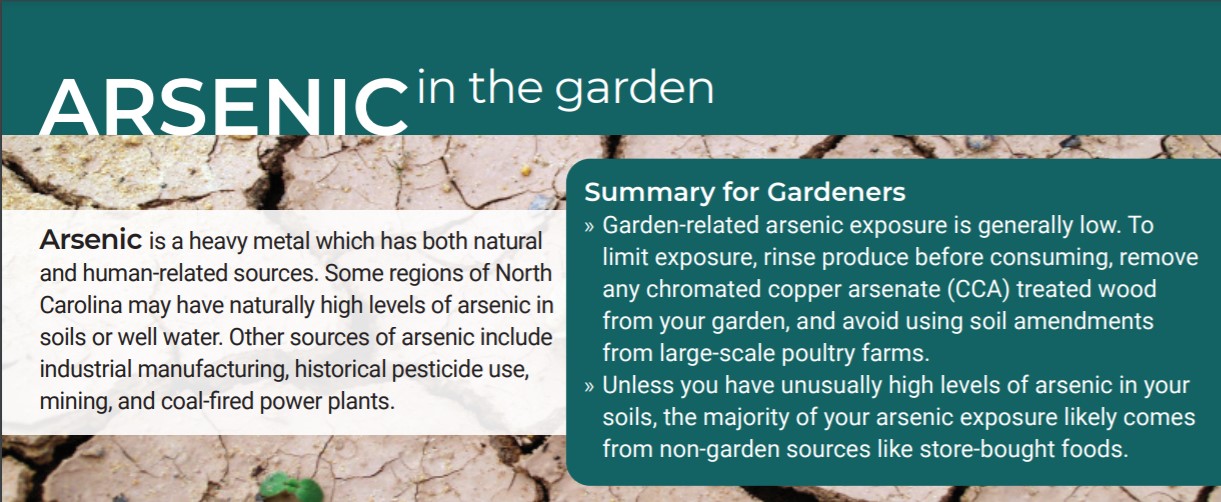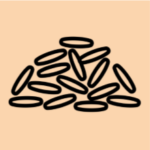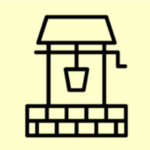Arsenic in the Garden
go.ncsu.edu/readext?826029
en Español / em Português
El inglés es el idioma de control de esta página. En la medida en que haya algún conflicto entre la traducción al inglés y la traducción, el inglés prevalece.
Al hacer clic en el enlace de traducción se activa un servicio de traducción gratuito para convertir la página al español. Al igual que con cualquier traducción por Internet, la conversión no es sensible al contexto y puede que no traduzca el texto en su significado original. NC State Extension no garantiza la exactitud del texto traducido. Por favor, tenga en cuenta que algunas aplicaciones y/o servicios pueden no funcionar como se espera cuando se traducen.
Português
Inglês é o idioma de controle desta página. Na medida que haja algum conflito entre o texto original em Inglês e a tradução, o Inglês prevalece.
Ao clicar no link de tradução, um serviço gratuito de tradução será ativado para converter a página para o Português. Como em qualquer tradução pela internet, a conversão não é sensivel ao contexto e pode não ocorrer a tradução para o significado orginal. O serviço de Extensão da Carolina do Norte (NC State Extension) não garante a exatidão do texto traduzido. Por favor, observe que algumas funções ou serviços podem não funcionar como esperado após a tradução.
English
English is the controlling language of this page. To the extent there is any conflict between the English text and the translation, English controls.
Clicking on the translation link activates a free translation service to convert the page to Spanish. As with any Internet translation, the conversion is not context-sensitive and may not translate the text to its original meaning. NC State Extension does not guarantee the accuracy of the translated text. Please note that some applications and/or services may not function as expected when translated.
Collapse ▲Sources of Arsenic Exposure
|
Ingestion of contaminated food, water, or soil is the primary way arsenic enters the body. Everyone’s personal exposure is a little different. Environmental exposures will depend on your diet, habits, activities, lifestyle, and many other factors. Research tells us that, in general, purchased foods and well water likely make up the biggest portion of a person’s total arsenic exposure, followed by arsenic from nearby industry and finally sources in the garden. |
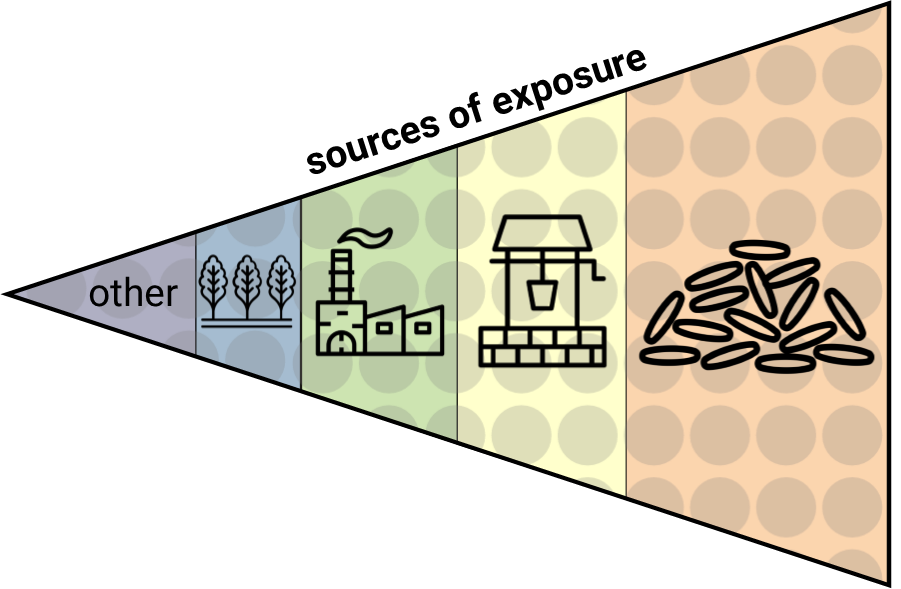 |
Exposure to Arsenic in the Garden
How am I exposed? Gardeners and children can be exposed to arsenic by ingesting soil particles, eating vegetables grown in contaminated soil, handling contaminated soil, touching CCA-treated wood, or breathing in contaminated soil particles.
Are my garden plants safe to eat? In general, very small amounts of arsenic move from the soil into most fruits and seeds (e.g. tomato, pepper, squash). Rice, however, is the exception and is known to take up higher amounts of arsenic.
Should I be worried? Garden-related arsenic is likely to be a small portion of a person’s arsenic exposure. However, reducing or limiting exposure to arsenic in the garden is still a good idea, especially for children.
Limit Children’s Exposure
Making Sense of Regulatory Standards
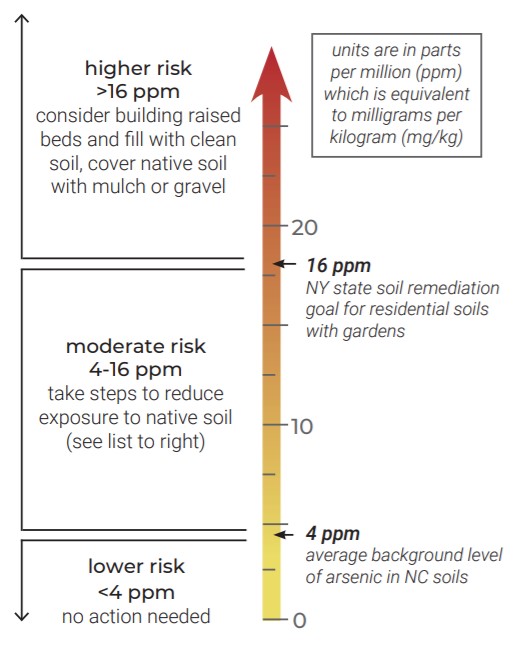
16 ppm is high risk, consider building raised beds and fill with clean soil, cover native soil with mulch or gravel.
No official standards have been established in North Carolina for acceptable levels of arsenic in garden soils. The guidelines below can help you determine whether arsenic levels in your garden are above or below the average levels.
Health Impacts of Arsenic
There is no official “safe” level of arsenic exposure from soil or food for the general population. Increasing your exposure to arsenic can incrementally increase your risk of adverse health effects. However, the increased risk due to exposure to arsenic in garden soils is likely to be very small compared to other sources of exposure.
Higher levels of exposure to arsenic are associated with several types of skin lesions and cancers as well as impacts on the nervous system, respiratory, and heart health. Exposure in early life has been associated with altered brain development and increased risk of lung disease later in life.
Reduce Arsenic Exposure in the Garden
- If applicable, test well water sources for arsenic
- Remove any CCA treated wood from the garden and choose untreated woods like cedar, black cherry, or oak, or other non-leaching materials
- Add compost or other organic matter from a contaminant-free source. Check the NC Composting Council website to find STA or OMRI certified compost
- Avoid using fertilizer (i.e., poultry litter) from commercial poultry farms. Arsenic is often used as a growth additive in poultry feed
- Aim for a neutral soil pH (around 7) to limit the bioavailability of arsenic in the soil
- Conduct a soil safety training to teach exposure reduction strategies to all garden users
- Visit our website below for our factsheet on 10 Healthy Garden Habits
Testing Resources
 |
Well water testing for arsenic |
 |
How to test your soil and interpret the results |
 |
Email questions about arsenic soil testing |
This factsheet was created by the Duke University Superfund Research Center’s Community Engagement Core with the goal of helping garden managers, Extension agents, Master Gardeners, and home gardeners identify, understand, and manage risks associated with chemical contamination that may be present in garden soils.
This work was supported through the National Institute of Environmental Health Sciences P42 Multiproject Center Grant program, grant number P42ES010356.



